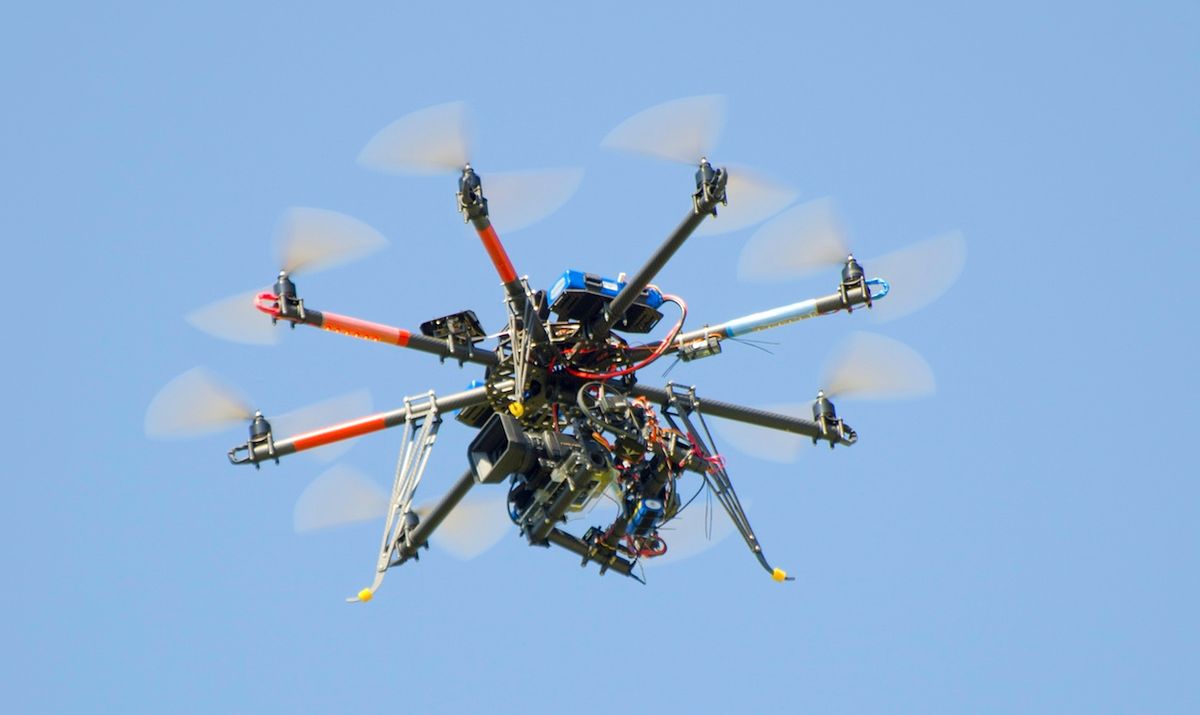This week, the U.S. Federal Aviation Administration announced new safety regulations for unmanned aircraft weighing less than 55 pounds (25 kilograms) that are conducting non-hobbyist operations. In other words, the pilots and drones shooting your wedding video, trailing a snowboarder to catch the best trick as seen from above, or taking aerial footage of the horse ranch for sale in the next county now have dictates to follow.
The general sUAS (small unmanned aircraft systems) rules that the FAA announced last year did a reasonable job of regulating small drones flown by hobbyists for fun. However, the rules did not make life any easier for anyone who wanted to fly a drone while making money; commercial operators were still required to register separately through a cumbersome and antiquated process involving paper.
The FAA promised that sometime in the spring of this year, they’d announce a streamlined registration process for commercial sUAS. Technically, they missed spring by a couple days, but the new commercial drone rules are finally here. In short, if you’re making money with your drone—by taking pictures or videos with it or whatever—and it weights less than 25 kg but more than 0.25 kg, these are the rules that with apply to you. They’re slightly different from the rules for recreational hobby drones, so it’s worth browsing what’s new:
- Visual Line of Sight (VLOS) flight only. You have to be able to see your drone with your eyeballs. Autonomy is okay, as is FPV, as long as eyeball-VLOS is preserved and you can take control.
- Commercial drones are allowed to fly during twilight, which is 30 minutes before sunrise and 30 minutes after sunset, as long as the drone is well lit.
- Maximum speed is 100 miles per hour (about 160 km/h). Maximum altitude is 400 ft (about 122 meters), but you can go as high as you want as long as you’re also within 400 ft of a structure, presumably to allow for inspection tasks.
- You can’t operate a drone from another aircraft, but you can operate it from a moving vehicle, as long as nobody else is around (“in sparsely populated areas”).
- “External load operations are allowed if the object being carried by the unmanned aircraft is securely attached and does not adversely affect the flight characteristics or controllability of the aircraft.” Cool!
- “Transportation of property for compensation or hire allowed provided that the aircraft, including its attached systems, payload and cargo weigh less than 55 pounds [25 kg] total; the flight is conducted within visual line of sight and not from a moving vehicle or aircraft; and” you’re not trying to do it in Washington, D.C. or between islands in Hawaii.
- “The new rule does not specifically deal with privacy issues in the use of drones, and the FAA does not regulate how UAS gather data on people or property.” But they’re working on it, and in the meantime, you’re encouraged to obey local laws and not be a creeper or a jerk.
Other requirements for the aircraft and pilot:
- The drone must be registered and comply with all of the registration rules about markings and stuff.
- “The FAA is not requiring small UAS to comply with current agency airworthiness standards or aircraft certification. Instead, the remote pilot will simply have to perform a preflight visual and operational check of the small UAS to ensure that safety-pertinent systems are functioning property.”
- The pilot must “either hold a remote pilot airman certificate with a small UAS rating or be under the direct supervision of a person who does hold a remote pilot certificate.”
- Want a remote pilot certificate? Great! You’ll need to be at least 16, pass an initial aeronautical knowledge test at an FAA-approved knowledge testing center, and get a security background check from the TSA, which ought to be a lot of fun and will make everybody feel much safer.
If you feel like any of these rules have the potential to get all up in your business, the FAA helpfully points out that “most of the restrictions discussed above are waivable if the applicant demonstrates that his or her operation can safely be conducted under the terms of a certificate of waiver.”
One other interesting thing: these rules don’t apply to moored balloons, kites, amateur rockets, and unmanned free balloons. We’ve been wondering whether this could lead to some interesting loopholes to exploit. Predictably, and sadly, the FAA is on top of this: to count as a balloon, an aircraft can’t have engines on it, so no getting around these rules with blimps or zeppelins. And kites don’t have engines on them either, which means that tethered powered unmanned aircraft don’t count as kites.
Everything goes into effect in August of this year; you can read the entire Part 107 ruleset (only 624 pages!) here.
[ FAA ]
Evan Ackerman is a senior editor at IEEE Spectrum. Since 2007, he has written over 6,000 articles on robotics and technology. He has a degree in Martian geology and is excellent at playing bagpipes.



